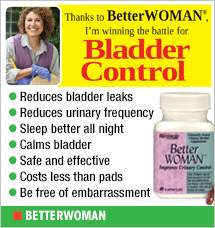
Pain is real, a sometimes aggravating part of aging. Pain is not inevitable with aging, but many seniors experience pain from ailments. I have osteoarthritis and have experienced the benefits of several alternative treatments. With all the media and societal discussion about pain medications, I explored alternatives available for seniors.
Most of us know the basic drill when speaking with our medical practitioners about pain. Modern medicine provides treatment guidelines and protocols, but if those don’t work or have unwanted side effects, there are some alternatives.
* Acupuncture: The acupuncturist puts long, slender needles through the skin to stimulate certain points of the body. The National Institutes of Health reports that acupuncture, from traditional Chinese medicine, may provide pain relief for chronic conditions such as low-back pain, neck pain, and osteoarthritis/knee pain. The process was developed in ancient China, before Western evidence-based medicine, and has been used by millions of people. Many studies refute acupuncture as a pain reliever, yet it is still a widely used method.
The NIH reported, “There have been extensive studies conducted on acupuncture, especially for back and neck pain, osteoarthritis/knee pain, and headache. However, researchers are only beginning to understand whether acupuncture can be helpful for various health conditions. Research suggests that acupuncture can help manage certain pain conditions, but evidence about its value for other health issues is uncertain.”
What do we know about the safety of acupuncture?
The NIH says acupuncture is considered safe when performed by an experienced, well-trained practitioner using sterile needles. Acupuncture that is carried out haphazardly or by an untrained practitioner can result in adverse effects.
* Reiki Healing: Recently I was talking to a millennial colleague who is also a health writer. She laughed when I spoke about the idea that Reiki healing can impact pain. While I am the first to look for evidenced-based practice, I did have to ask her, “For someone in pain who has tried multiple traditional therapies, what does that person have to lose?”
Reiki is a Japanese spiritual practice, not based on any particular religion, that accesses a “life force energy” within the body and uses it for healing. A trained Reiki Master will lay hands on a person, which heightens the energy within. I have experienced this several times. I am not a scientist, and as the daughter of a science teacher I tend to be skeptical. Whether my pain reduction came from a quiet, restful hour or the touch of a Reiki master, I cannot say. It does, however, provide relief for me.
While there are few studies showing benefit, one study reported by the University of Pennsylvania Medical Center cited benefits for cancer patients during chemo. “Our recent study has shown that Reiki induces relaxation, decreases anxiety, stress and a patient’s perception of pain,” said Jun Mao, MD, director of the Integrative Oncology Initiative at the Abramson Cancer Center.
Penn’s program for cancer patients also includes acupuncture, mindfulness-based stress reduction, yoga, and massage. Physicians explained that Reiki doesn’t compete with other pain treatments. “Reiki itself does not cure cancer but it may help lead to better adherence to conventional therapies, which in turn will promote better clinical outcomes,” Mao added.
* Jin Shin Jyutsu: During a recent massage, I complained to my massage therapist about my ongoing struggle with asthma. I follow all the rules and use all the medications and techniques my doctors prescribe. Our Ohio River Valley air was particularly humid and polluted, and I was having more trouble than usual with breathing. She suggested a Jin Shin Jyutsu treatment along with my massage. Ever the skeptic, I quizzed her about it, and then decided, “what the heck?”
Again, perhaps it was the quiet hour, relaxing music, and massage touch, but I felt remarkably better. My breathing deepened and I will try it again.
Of course, this anecdote is but one example. Clinical, evidence-based research is lacking, but likely the treatment can do no harm.
The Jin Shin Jyutsu method also traces back into ancient times – before Buddha and Moses. Oral tradition passed the practice down through the generations. The practice had all but disappeared until it was rediscovered by Master Jiro Murai, a healer, and philosopher.
The tale goes that Murai was able to heal Emperor Hirohito’s brother and thus given access to ancient texts that offered more information. During treatment, the practitioner uses his or her hands to work with 26 points of energy. This set of points is known as Safety Energy Locks along energy pathways in the body. The tradition says that when a pathway is blocked, energy stagnates which initially affects the local area and ultimately can create an imbalance along the entire pathway. (This is similar to acupressure, though acupressure has 300 points.)
Mary Burmeister met Murai in Japan and brought Jin Shin Jyutsu to the U.S. She did not believe in promoting the healing procedure as a business, so today it is still primarily learned by word of mouth.
The science around our mind has exploded in the last 50 years. We still fully lack an understanding about the power of our mind to heal, but few adverse reactions exist for the three treatments discussed.
As always, check with your regular healthcare providers before trying any therapies.
Find my books and columns at www.amyabbottwrites.com.







































































